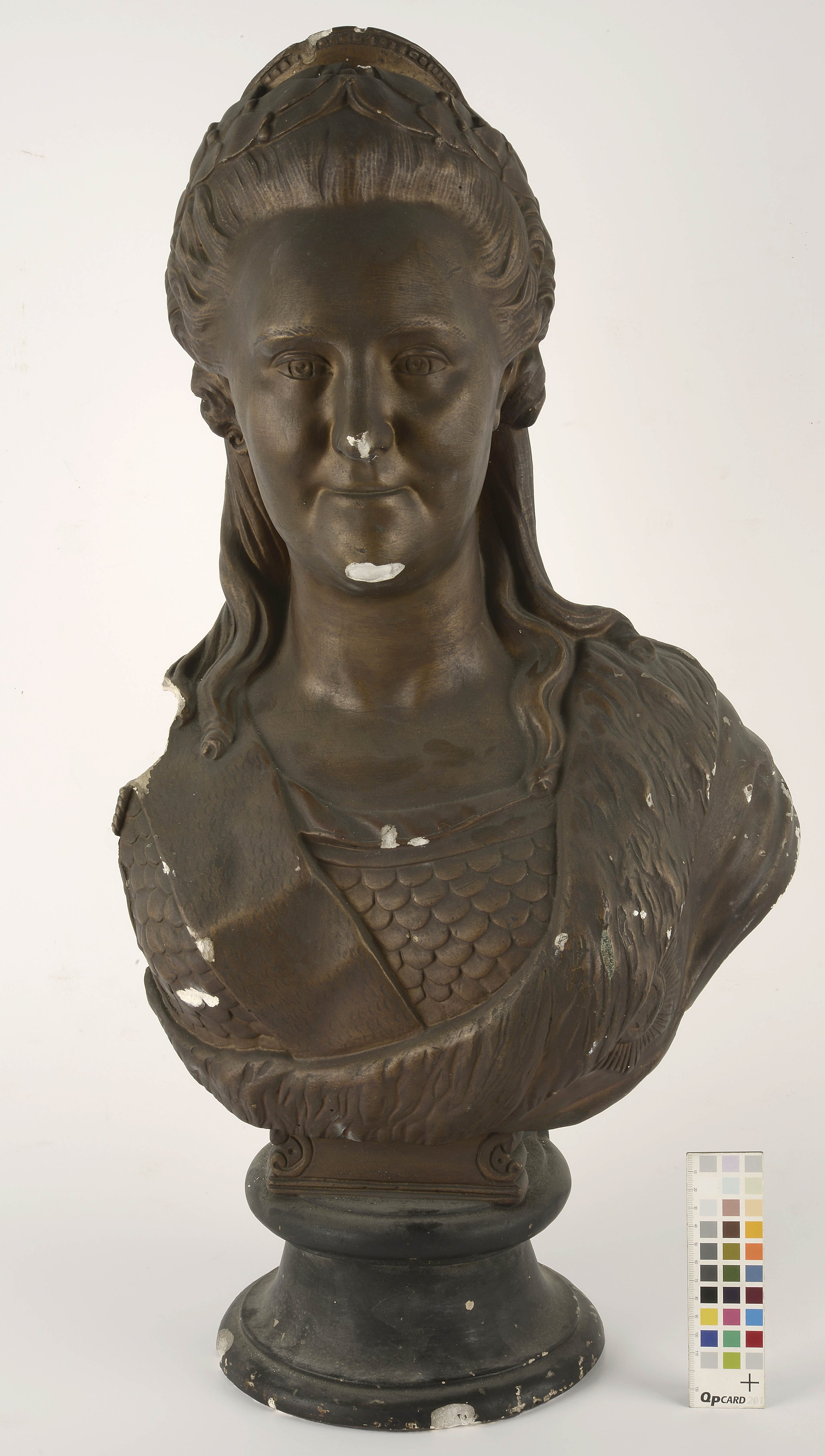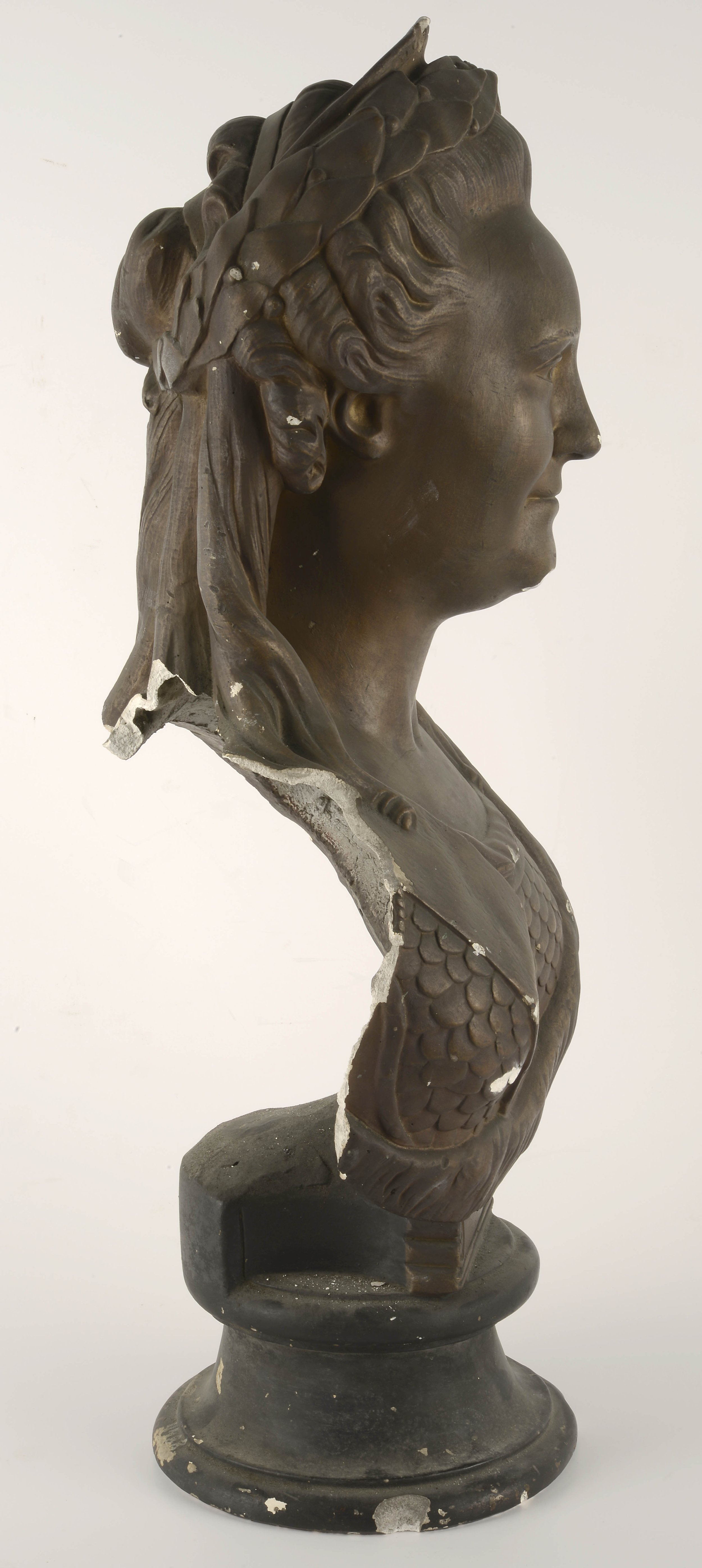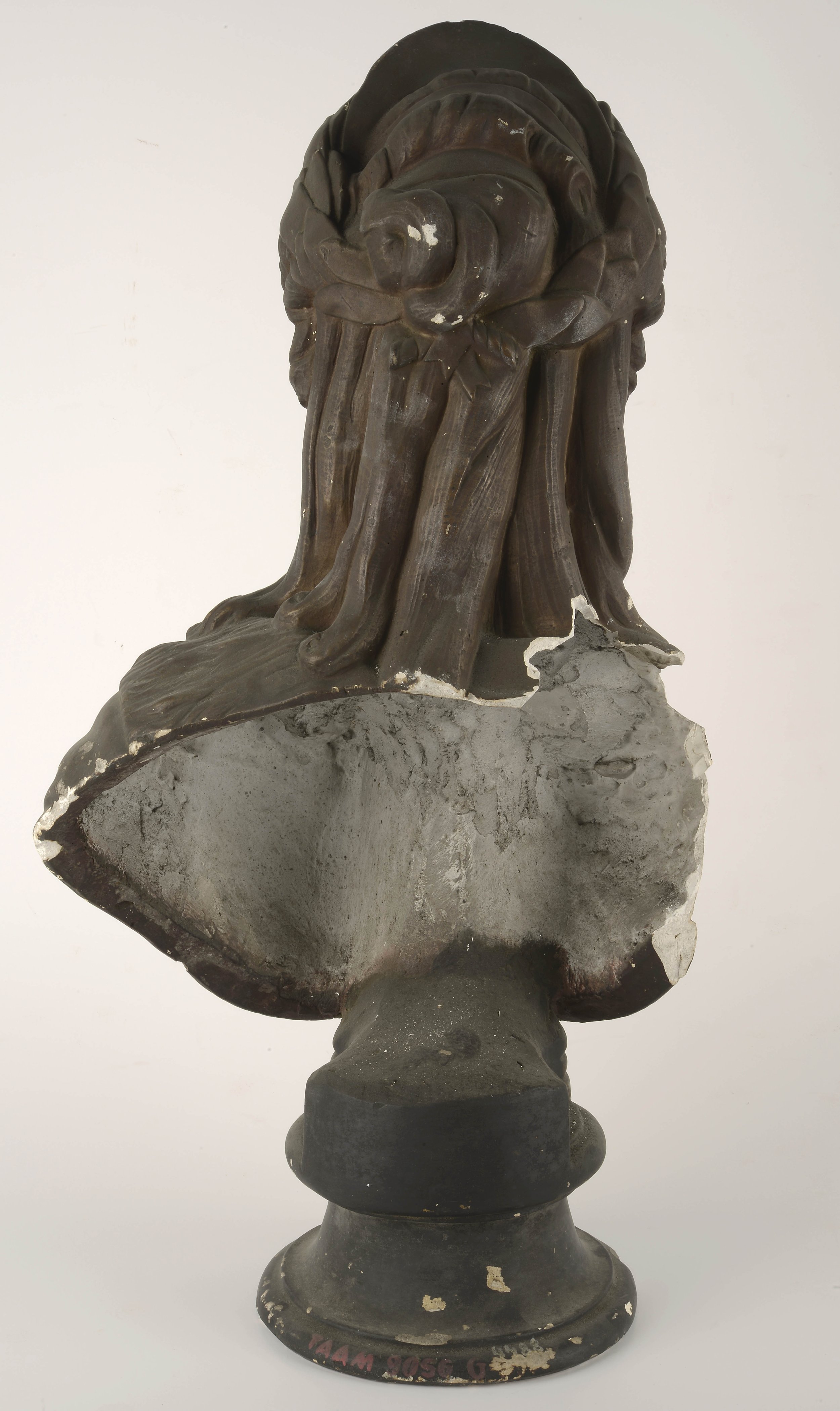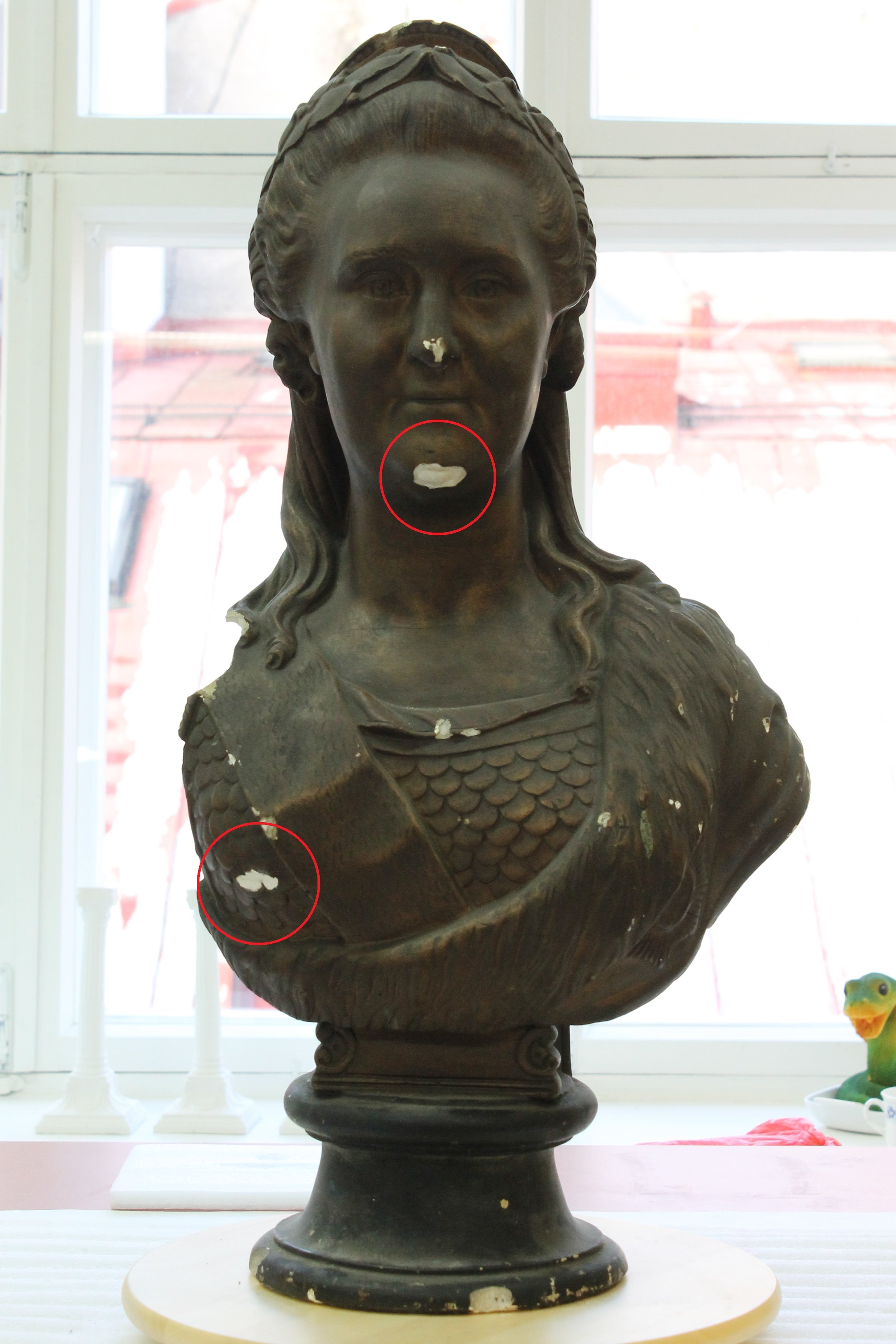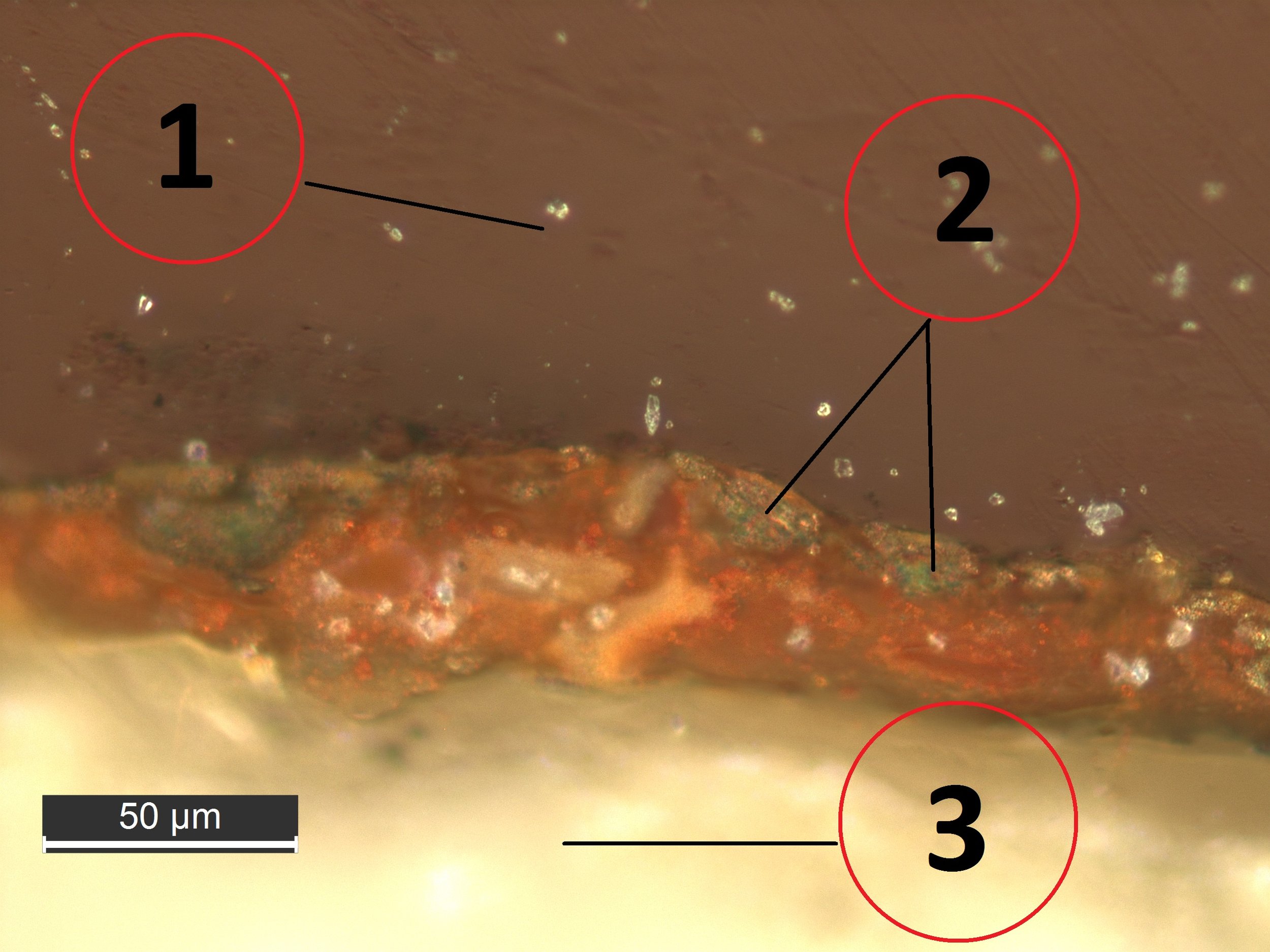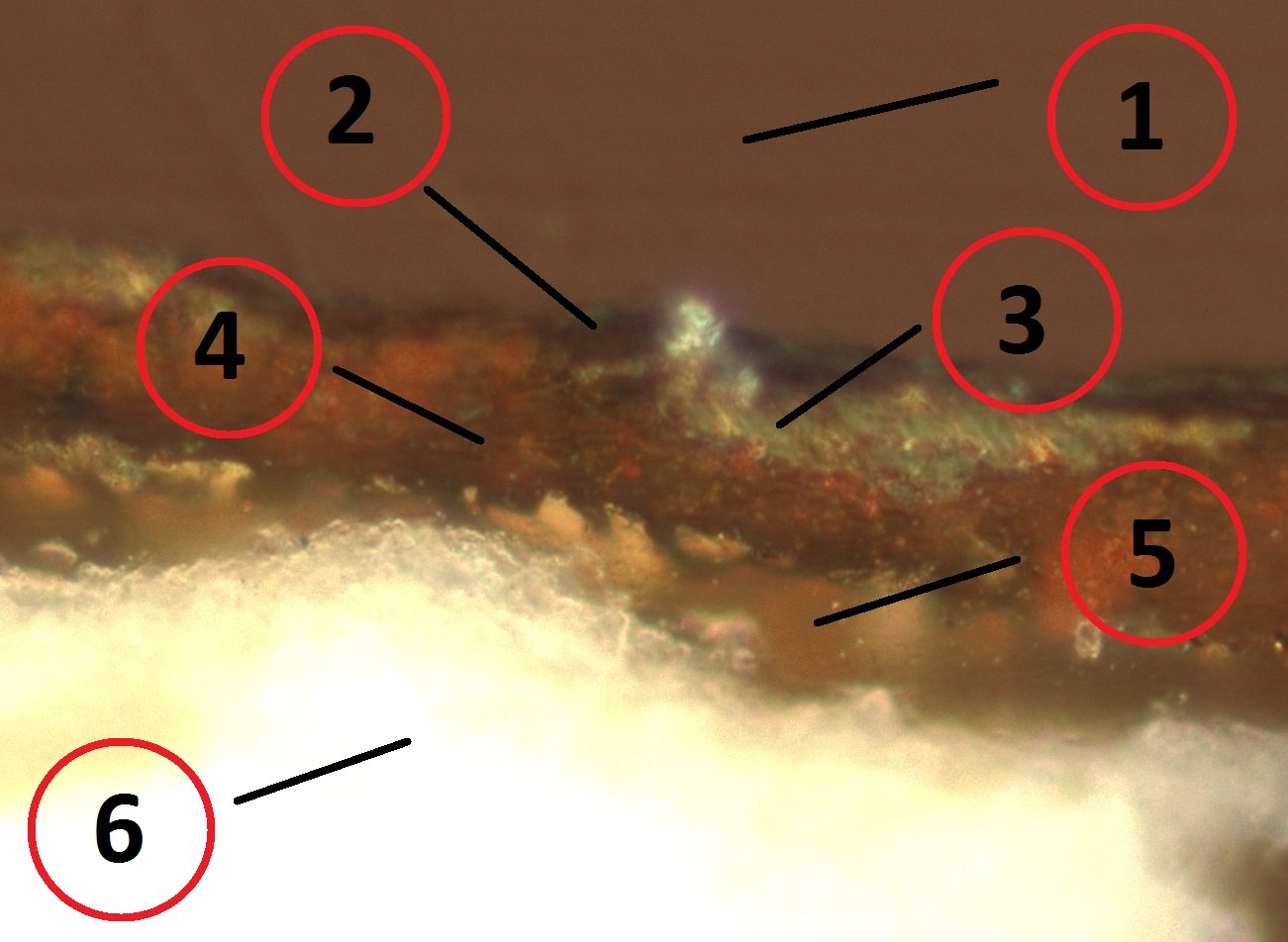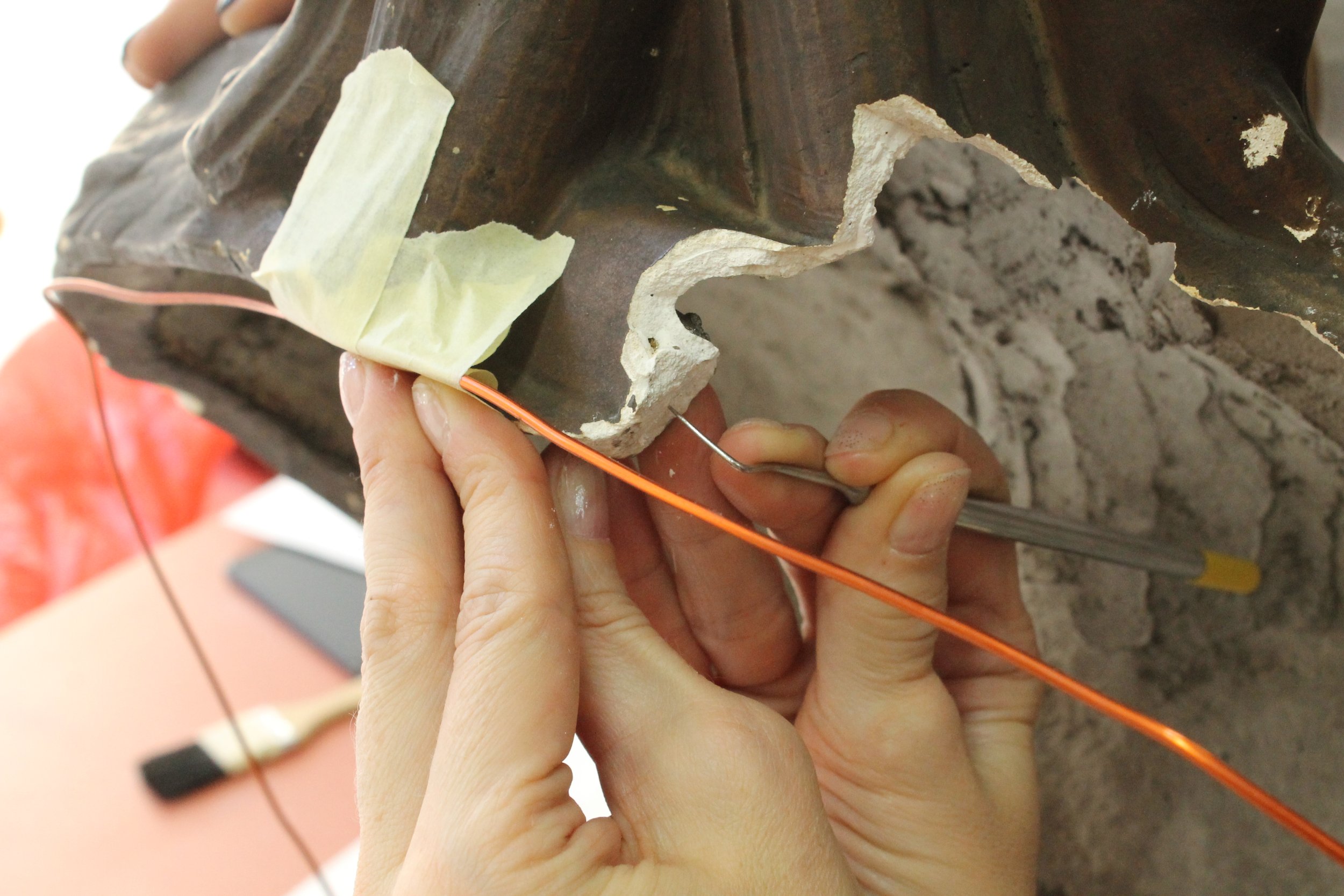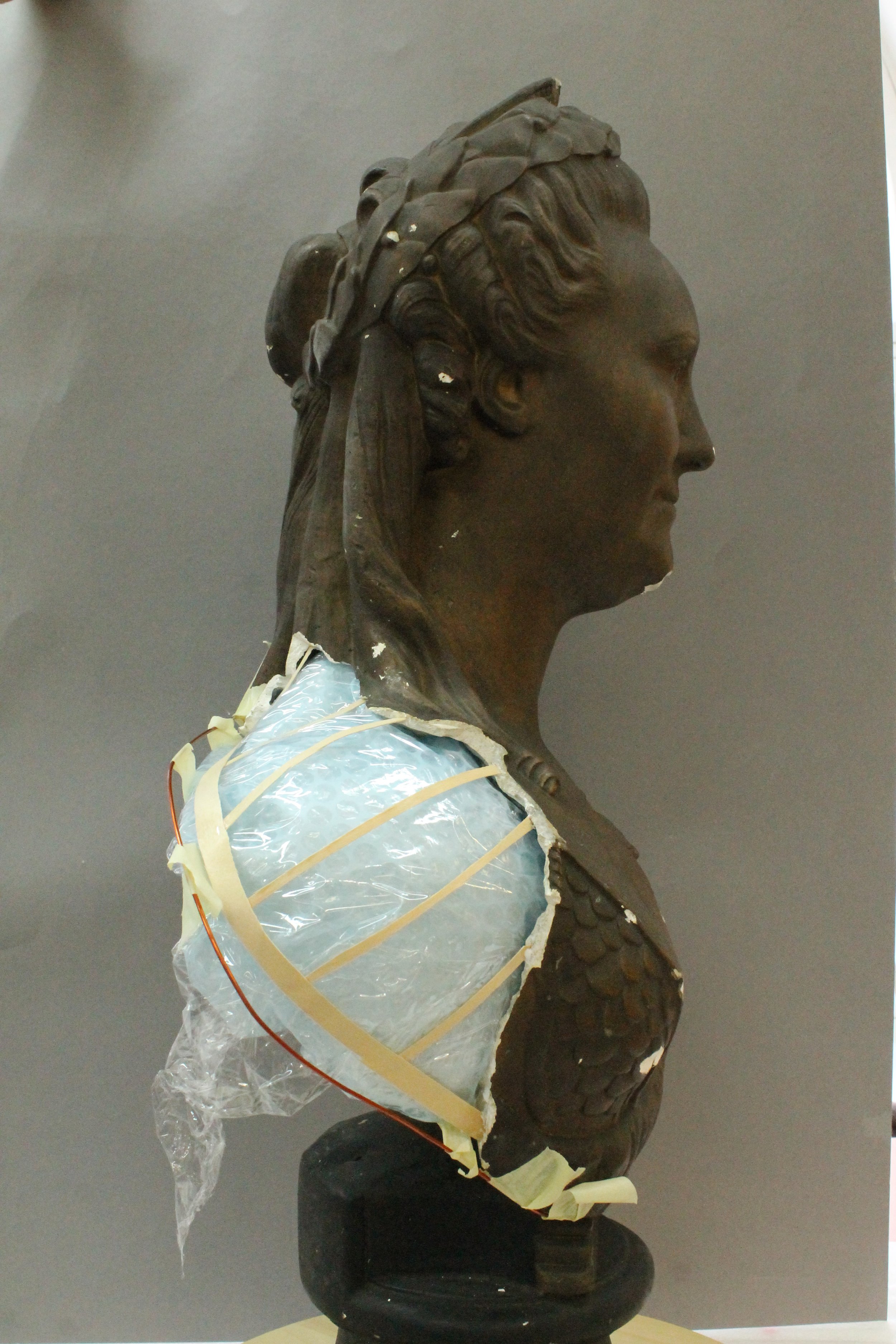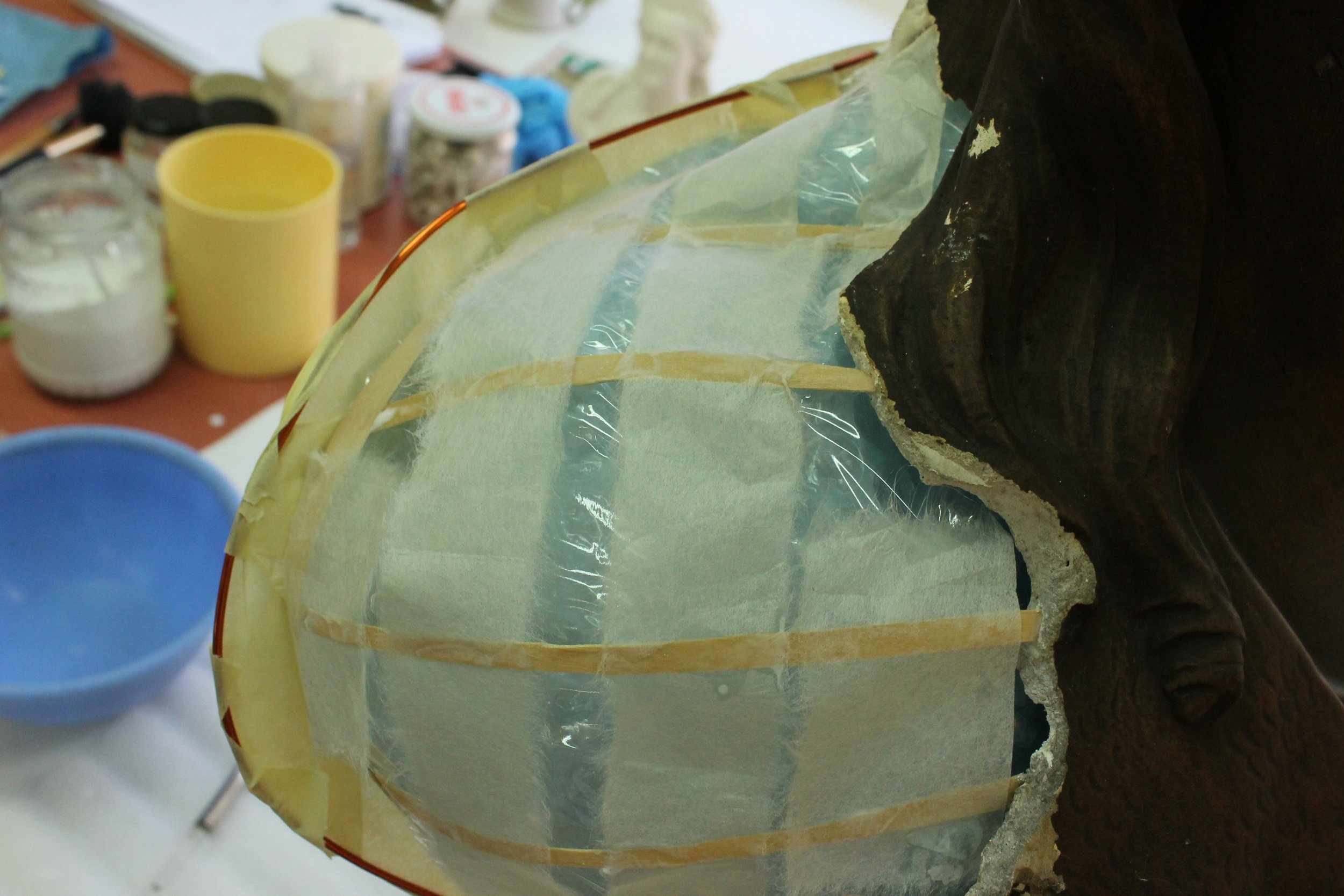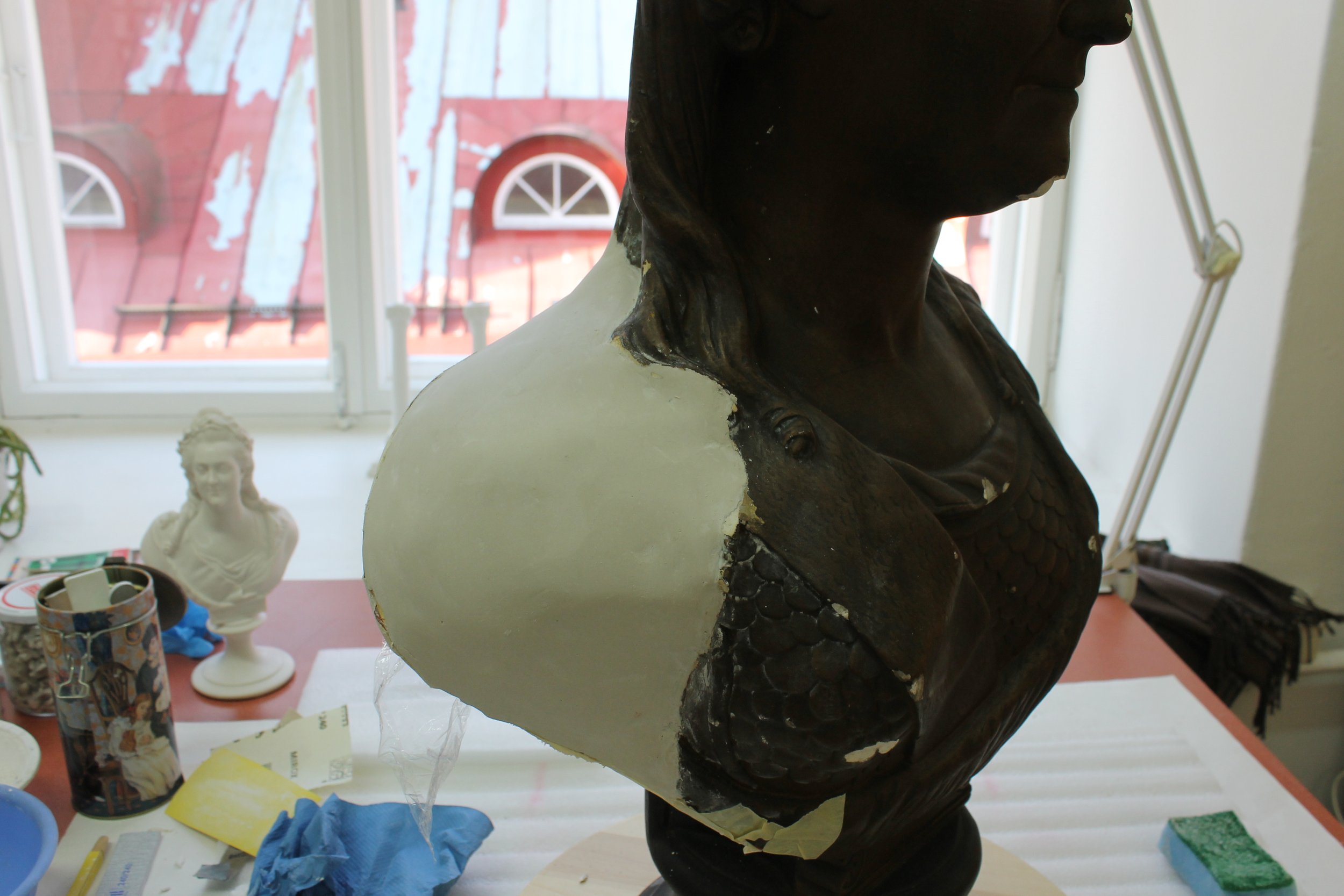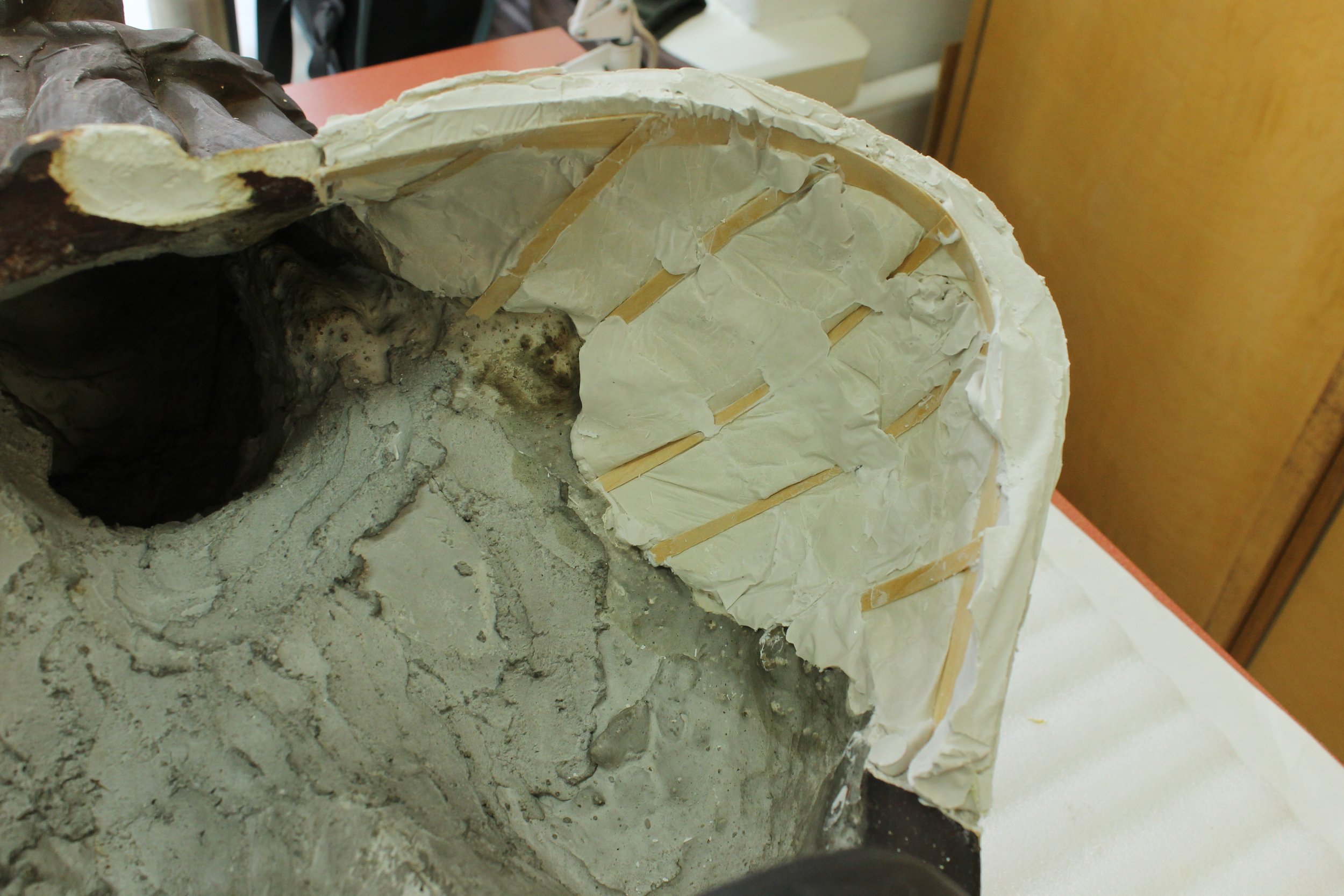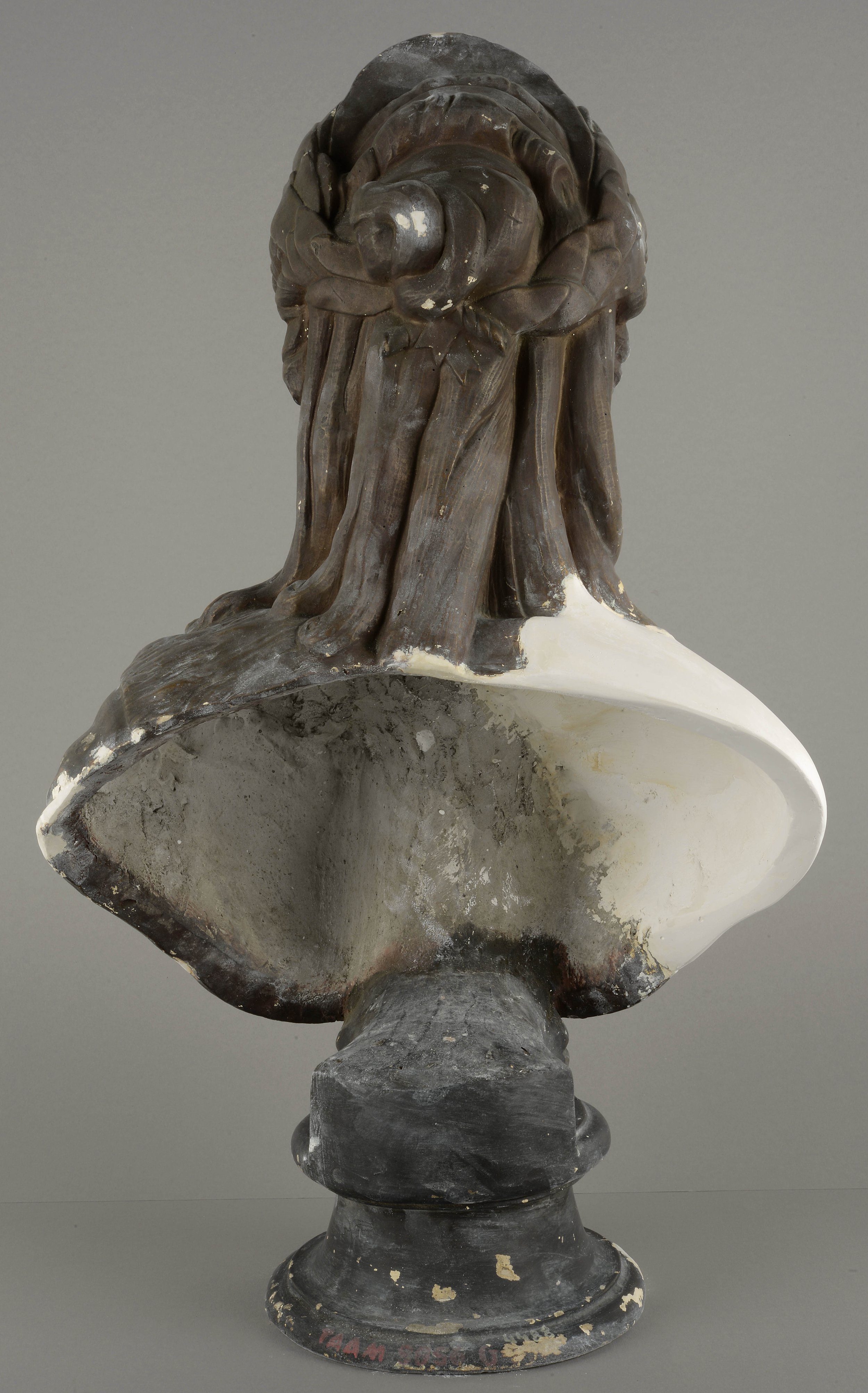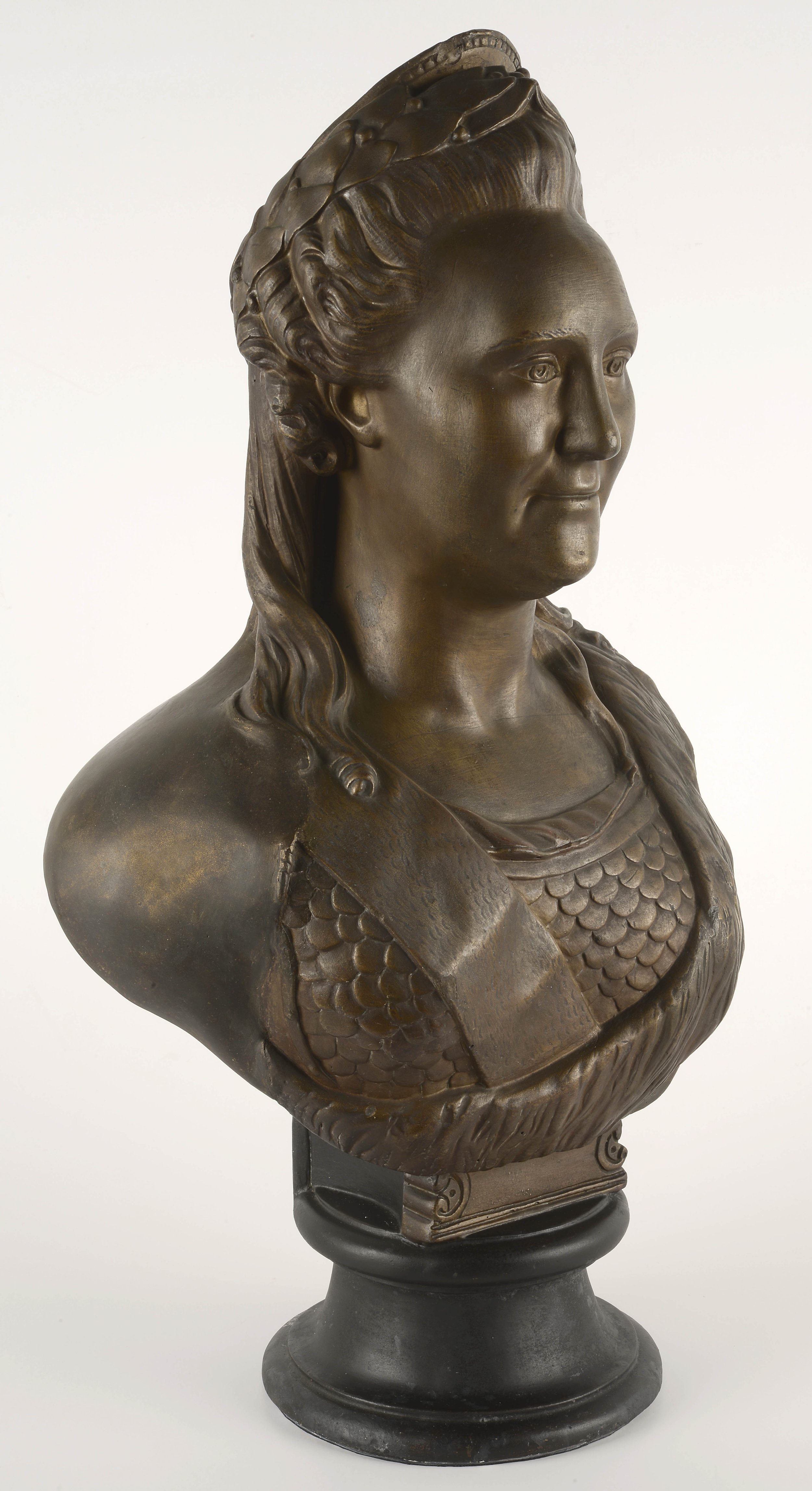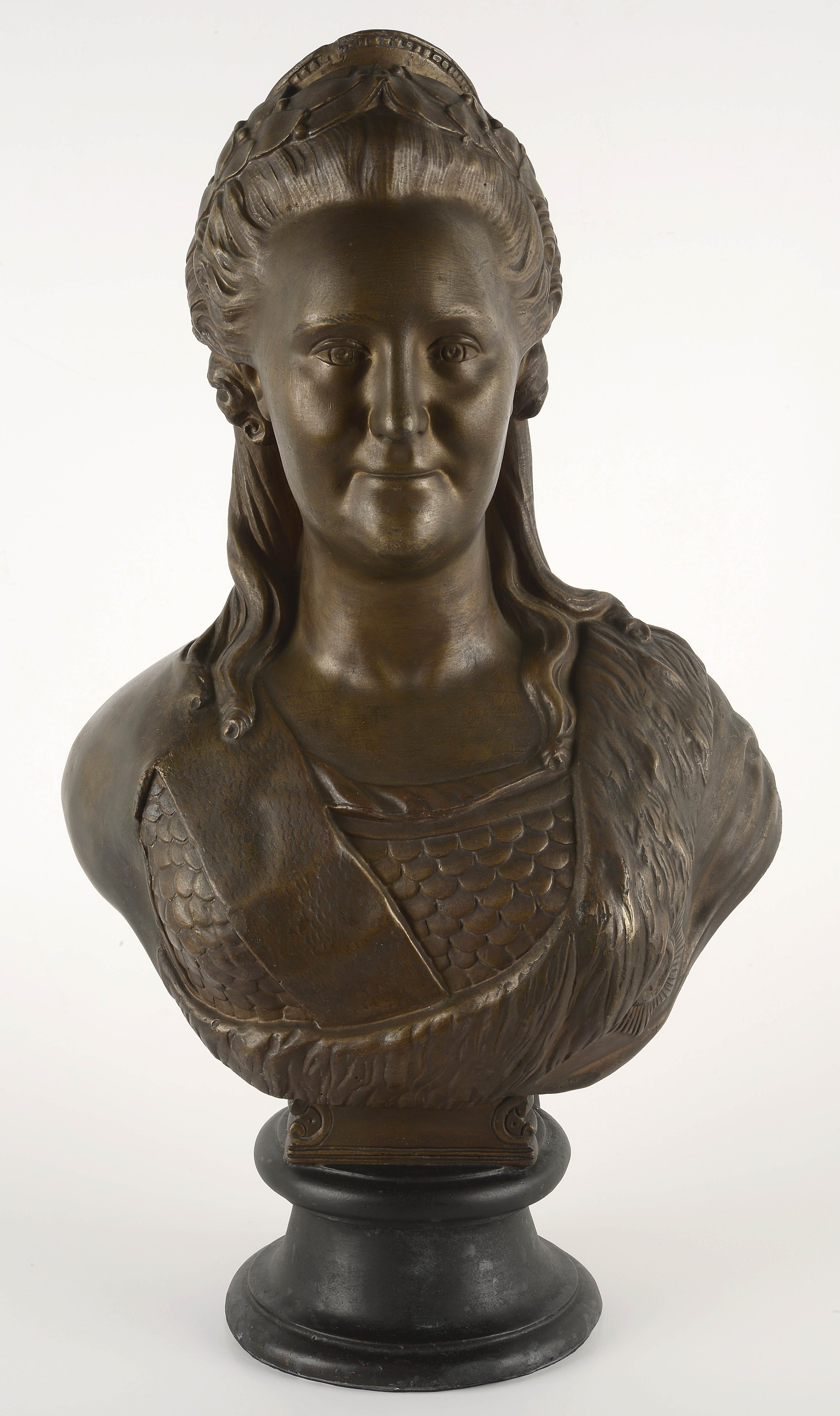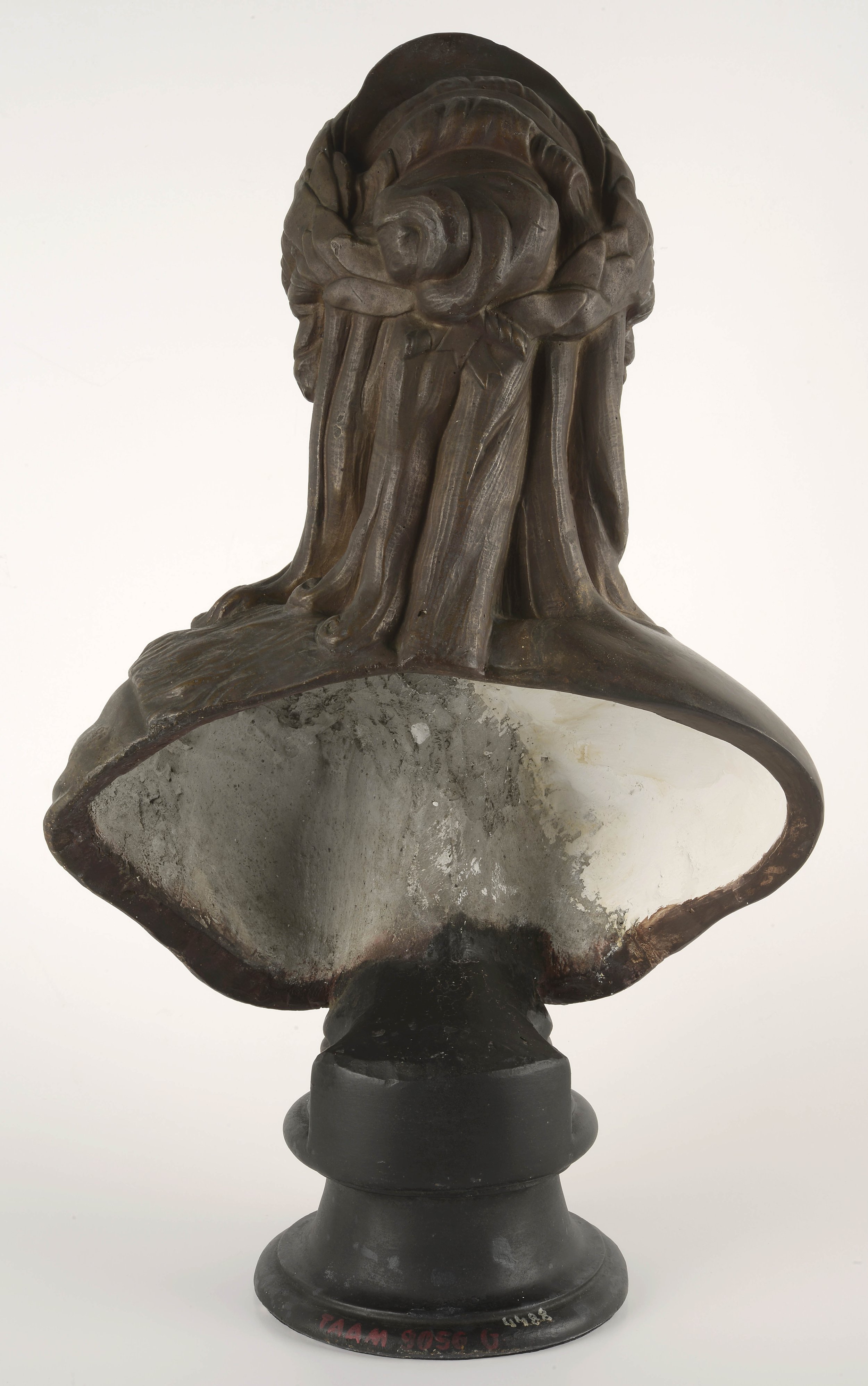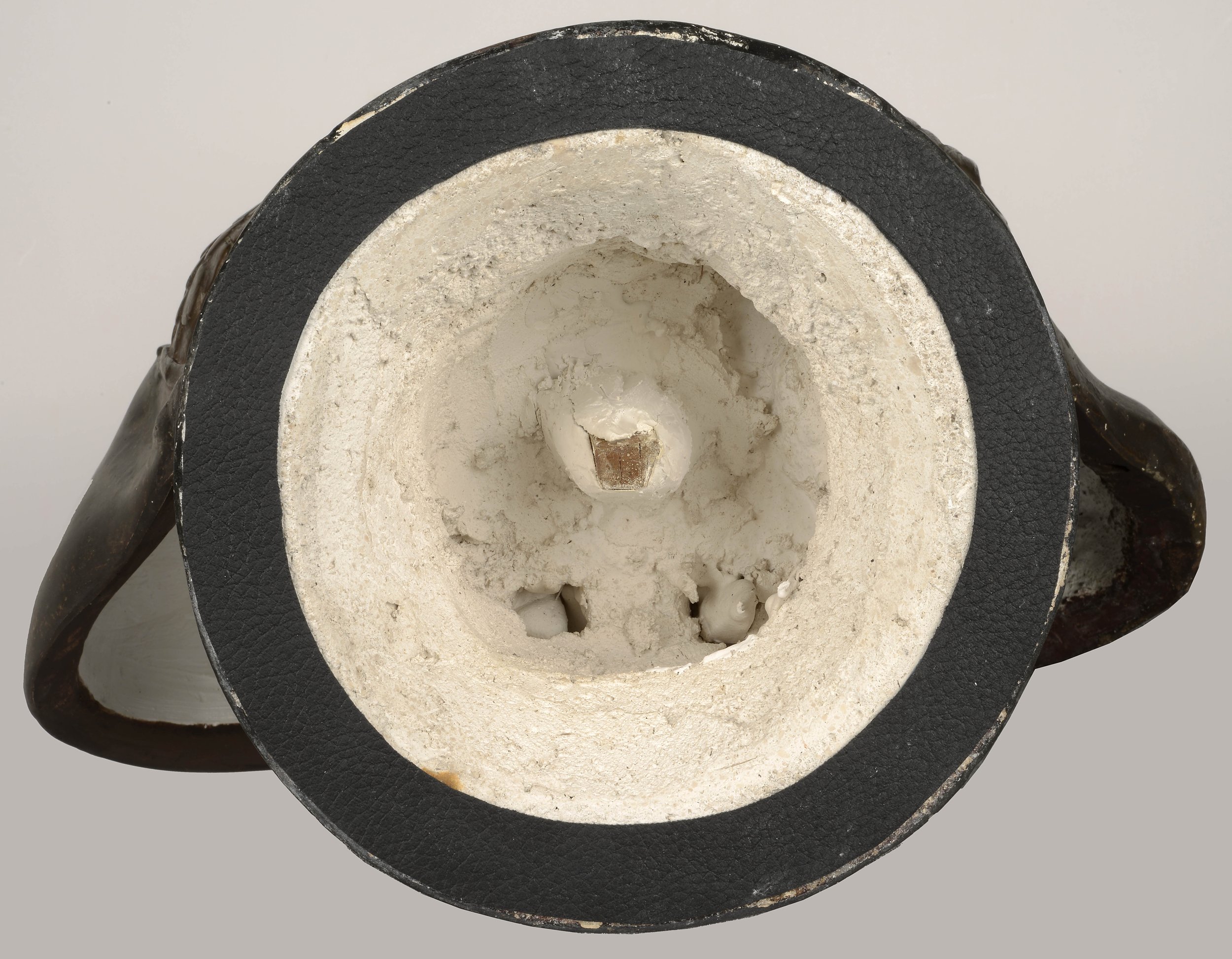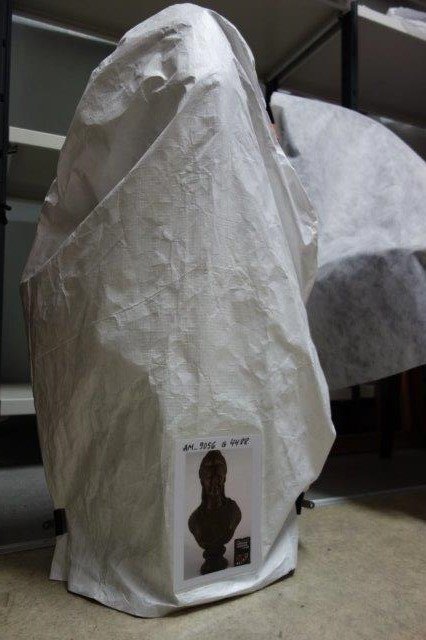BUST OF CATHERINE II, CONSERVATION AND RECONSTRUCTION OF A MODERN ICON
Autor:
Simeone Colucci
Year:
Anno 2017/2018
Category:
Conservation
Empress Catherine II represented one of the golden periods of the Russian Empire in the second half of the 18th century and thus also her portrait has become one of its best-known symbols. As the Empress has been frequently painted and sculpted, we have a rather good idea about her countenance.
The plaster bust of Catherine II was brought to the Kanut Centre in a bad condition – fragments were missing in its central part and in its pedestal and a bigger part on the left shoulder, the surface was pitted (lacune) and covered with dust.
It was a common practice in the 18th and 19th centuries to enliven gypsum portrait busts of eminent people using various colouring methods. In this case we have got a typical portrait of a prestigious person with bronze colouring – just one of the ways to imitate more precious materials like bronze.
Gypsum has always been cheap and may be that is why it was always in demand. Its original pale colouring, though, was not suitable for luxurious rooms, royal palaces and big museums and this made artists test new methods for imitating metals. A lot of portrait busts of the period bear witness to these experiments all over Europe and not only here.
Before we started our work, we collected material samples from the surface with the help of a binocular microscope.
The samples were photographed with LEICA DM 750 P microscope (50μm and 100μm). It is possible to see three different layers clearly – the first one on the bottom is constitutive plaster with a transparent layer on top that might be grease matter used for a preparation layer. On the very top is a brownish red grease layer, the pictorial binder with bronze and golden powder. The photo did not reveal any previous interventions.
As for the paint film on the sculpture, we should point out its good resistance to knocks. The missing fragments all over the surface must have been caused by a fall when the bust was dropped on its left side, hence also the missing shoulder.
Having carefully thought it through, we decided to rebuild the missing part with the same material but not so that the intervention would be recognised. Elastic wooden sticks were used to form a grill on which liquid plaster was poured. Sheets of plastic under the grill were to stop the liquid plaster running. The procedure had to be repeated several times before the right thickness was achieved. A few hours later the liquid plaster was poured on to totally cover the grill.
The next day the new portion had dried and it was possible to scrape the rough plaster using sandpaper of different grain.
Next the paint surface was cleaned with alcohol and tri-ammonium citrate in methyl-alcohol cellulose (gel). The gelatine was chosen for its right quality working on porous materials. It is possible to check and remove it when the time is right, it is possible to add solvents and it keeps the inner layers dry. Previously other cleaning methods were tested, such as cleaning with de-mineralised water, even with alcohol and saliva but none of them was good enough.
Finally, the new big part and the other worked on parts were painted in the bronze colour resembling the original. The pedestal was fixed in the same way and painted alike the original black colour. To secure the bottom of the pedestal better, cardboard in between soft leather was fixed on it and transparent varnish was sprayed evenly all over it.
Turing the project the author of the article and the supervising object conservator Aire Aksiim gained invaluable experience. Conservators did all in their part to restore dignified look of the damaged gypsum bust and now it can be preserved for the future.
REFERENCES:
Uuringud teostati Eesti Kunstiakadeemia muinsuskaitse ja konserveerimise osakonna laboris.
Töölahus pinnapuhastuseks: 10%-lisele metüültselluloosi geelile lisati 1%-list triammoonimtsitraati (puhastusefekt) ja pisut 96%-list etanooli (etanool ei põhjusta kipsi kihtide märgumist). Triammoonimtsitraat on kelaat, mis moodustab vees mittelahustuva mustuse osakestega veeslahustuva komplekssoola.
Goldfinger (Sovereign Gold), Inglismaa, www.daler-rowney.com
LEFRANC & BOURGEOIS VERNIS MAT A TABLEAUX AEROSOL / MATT PICTURE VARNISH SPRAY. Maaletooja AS Vunder, Eesti.
Moment Universal Classic, Henkel.
Museaalide pakendamiseks soovitatav materjal Tyvek 1422A on elastne, pehme ja sile mittekootud kangas, mis on paberist kergem, tugevam ja pikaealisem. Materjal on inertne, gaase läbilaskev, mitteabrasiivne, vee- ja tolmukindel. Selle läikivam pool on antistaatiline – tolmu ja mustust tõrjuv, kuid pehme külg hoiab tolmu ja määrdumuse kinni ning ei lase sellel levida ümbrisesse. Materjal on pestav ja korduvkasutatav, kuid arvestama peab, et vee toimel vähenevad selle antistaatilised omadused. Tyvek 6060 müüakse lehtedena, valmis teipide ja etikettidena, mis sobivad museaalide märgistamiseks, sest materjalile saab kirjutada nii pliiatsi kui markeriga ning liimida neutraalse pH-ga PVA-liimiga. Tooteid pakub firma Preservation Equipment Limited (PEL), Inglismaa. https://www.preservationequipment.com/ (Toimetaja märkus).

